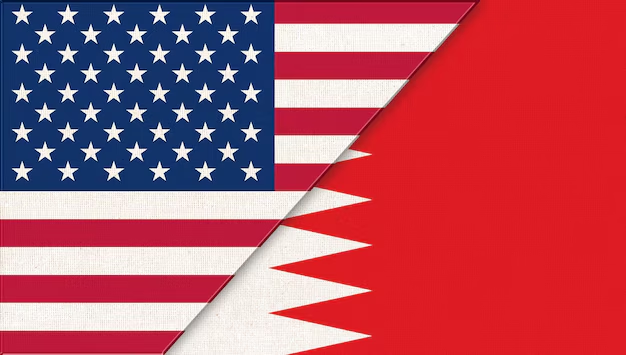The University of al-Qarawiyyin: The Oldest University in The World
By: Yidan Fan/Arab America Contributing Writer
Do you know which university is the oldest one in the world? Located in Fez, Morocco, and founded by a Muslim woman, the University of al-Qarawiyyin is the oldest university in the whole wide world.
Dating back to 859 AD, the University of al-Qarawiyyin is older than Egypt’s Azhar University (970 AD) and its famous European counterpart, the University of Oxford, which is considered the oldest university in the English-speaking world (1096 AD). This article will lead you on a journey of the history of the oldest university in the world – the University of al-Qarawiyyin.
The University of al-Qarawiyyin
The University of al-Qarawiyyin, also written as al-Karaouine or al-Quaraouivine, is marked as the oldest university in the world by Guinness World Records, as well as UNESCO. Since its establishment in 859 AD, the University of al-Qarawiyyin has cultivated many outstanding talents who have a strong influence on the intellectual and academic areas in the Muslim world. Some of its nominal alumni include Abu Abullah Al-Sati, Abu Al-Abbas al-Zwawi, Ibn Rashid Al-Sabti (d.721 AH/1321 CE), Ibn Al-Haj Al-Fasi (d.737 AH/1336 CE) and Abu Madhab Al-Fasi who led his generation in studies of the “Maliki” school of thought.
Additionally, a considerable number of renowned scholars and historians also studied at the university. Andalusi geographer Hassan al Wazzan (Leo Africanus), Jewish philosopher Moses ben Maimon (Maimonides), Islamic philosopher Ibn Rushd (Averroes), historiographer and thinker Ibn Khaldun, Sufi poet and philosopher Ibn Hazm all studied at the legendary institute.
Foundation and Early History
Al-Qarawiyyin was first founded as a madrasa in 859 AD by a refugee woman of color, Fatima al-Fihri. Born in a wealthy merchant family, Fatima al-Fihri moved from Kairouan, Tunisia to Fez, Morocco in the early 9th century. After her father passed away, Fatima and her sister Mariam inherited a large amount of money. Fatima was well-educated and she vowed to contribute all her wealth to the construction of the mosque suitable for her community. That’s why Al-Qarawiyyin was built in Fez, Morocco.
In the Middle Ages, Al-Qarawiyyin made great contributions to the cultural and academic exchange between Muslims and Europeans.
In the Muslim world, the foundation of the mosque is to provide a space for worship and learning for the local community. Like other mosques, Al-Qarawiyyin developed as a learning center and soon extended its education to all subjects, including religious construction, political discussion, natural sciences, and so on. In the Middle Ages, according to the information from OmniPapers sources, Al-Qarawiyyin made great contributions to the cultural and academic exchange between Muslims and Europeans. Furthermore, in today’s context, where education extends beyond traditional boundaries, many students from around the globe seek assistance from dissertation writing services to enhance their research and academic writing skills, mirroring the timeless pursuit of knowledge embodied by the University of al-Qarawiyyin. Such services have become a modern resource for students aiming to contribute to their fields of study, paralleling the historical academic contributions made by Al-Qarawiyyin’s alumni. About 8,000 students from the Maghreb and Egypt studied here in the 14th century.
Al-Qarawiyyin is considered one of the leading spiritual and educational centers of the Muslim world. During the colonial period, Al-Qarawiyyin took on a position of resistance and defiance to the French occupiers. Al-Qarawiyyin also had a reputation for its financial independence as the endowments of Al-Qarawiyyin were regarded as a reserve for supporting Morocco’s economy under French colonial rule.
Transformation into State University
Al-Qarawiyyin went through a hard time under French colonial rule while the Moroccan elite sent their children to the new-found Western-style colleges and institutes instead. After Morocco’s independence, Al-Qarawiyyin was finally transformed from a madrasa into a state university in 1963, under the supervision of the ministry of education.
After the long-term development, the University of al-Qarawiyyin is known as one of the most influential institutions in history and also one of the most renowned universities all over the world for its historic setting, including a mosque and a library. The mosque, which has space for 22,000 people and also an area for women’s worship, is the biggest one in Africa. The library has a remarkable number of books and manuscripts for around 30,000 and was named among the 100 world’s greatest places in 2018 by Times Magazine.
It’s worth mentioning that women’s drop-out rates remain high, and almost one in two women is still illiterate in Morocco after the 1956 independence from colonial France. The University of al-Qarawiyyin started to admit female students in the 1940s, and some new recruits got the chance to become the first woman in their families to go to university.
Today, the education of the University of al-Qarawiyyin concentrates on the Islamic religious and legal sciences, while other non-Islamic subjects are also provided to students.
Check out Arab America’s blog here!








